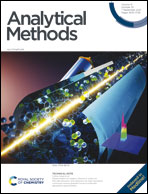Simulation and machine learning modelling based comparative study of InAlGaN and AlGaN high electron mobility transistors for the detection of HER-2
Abstract
The detection of the cancer biomarker human epidermal growth factor receptor 2 (HER-2) has always been challenging at the early stages of cancer due to its very small presence. A systematic study of biosensors to achieve optimum sensitivity is of paramount significance. Thus, in this paper, we report a simulation study and machine learning (ML) based model for the comparative analysis of indium aluminum gallium nitride (InAlGaN) and aluminum gallium nitride (AlGaN) based high electron mobility transistors (HEMTs) for the detection of HER-2. The sensing performance of the InAlGaN based HEMT exhibits 1.8 times higher sensitivity as compared to that of the AlGaN based HEMT. The presented work also provides insights into the importance of the pH of the medium of HER-2. The results produced by the developed ML-based model are in good agreement with the simulation results. The model is not only capable of predicting within the trained range but also it can predict reasonably well even beyond the range of the training data. The introduction of a ML-based model significantly reduces the computational cost, time to perform similar type of simulations and, unlike the physics-based modelling, it also eliminates the need for empirical fitting of the model parameters.

- This article is part of the themed collection: Analytical Methods HOT Articles 2021


 Please wait while we load your content...
Please wait while we load your content...